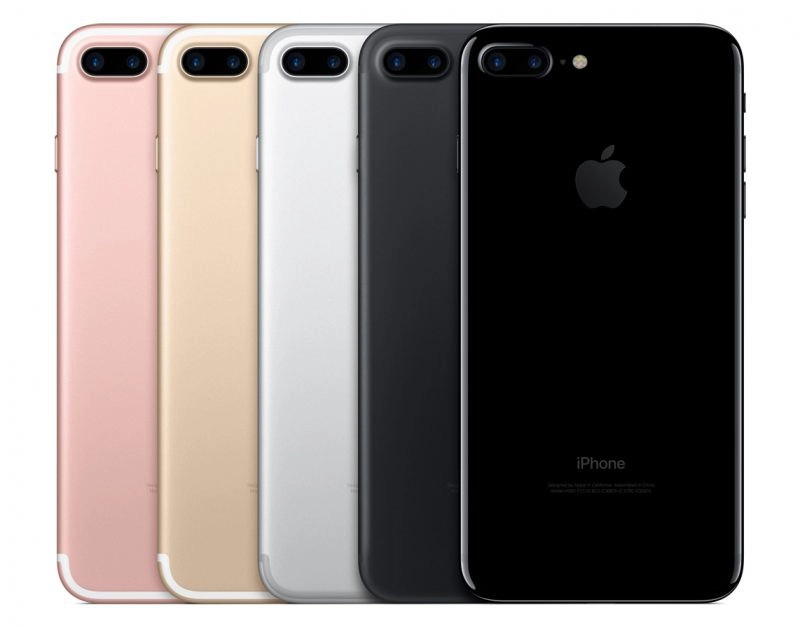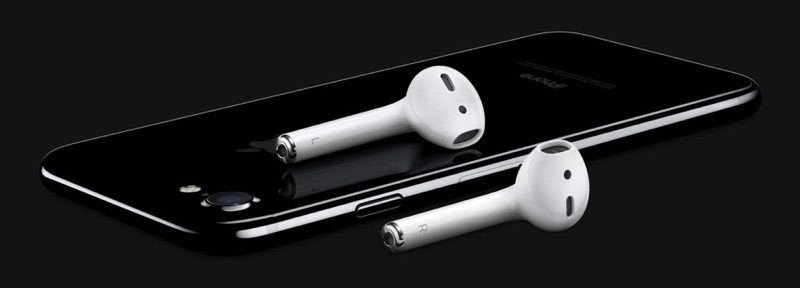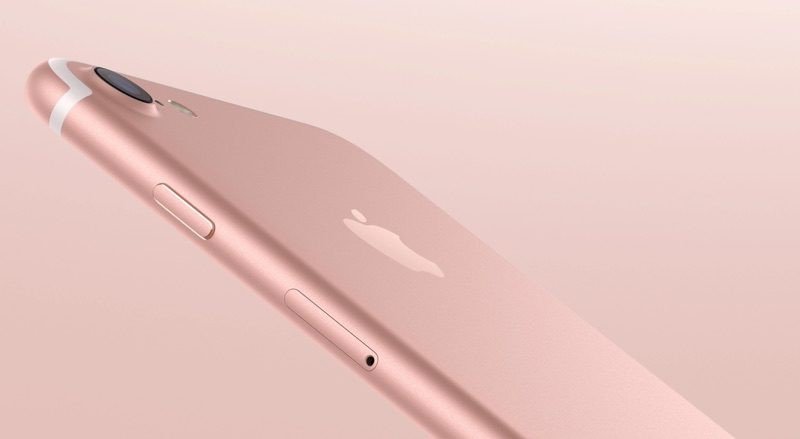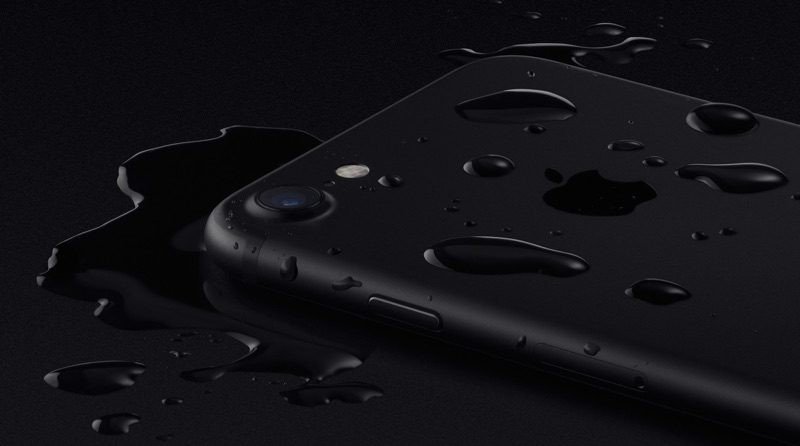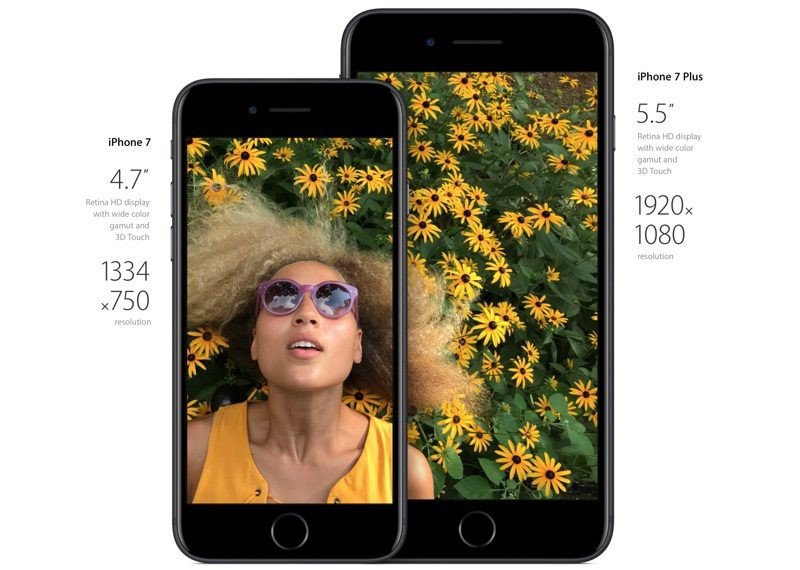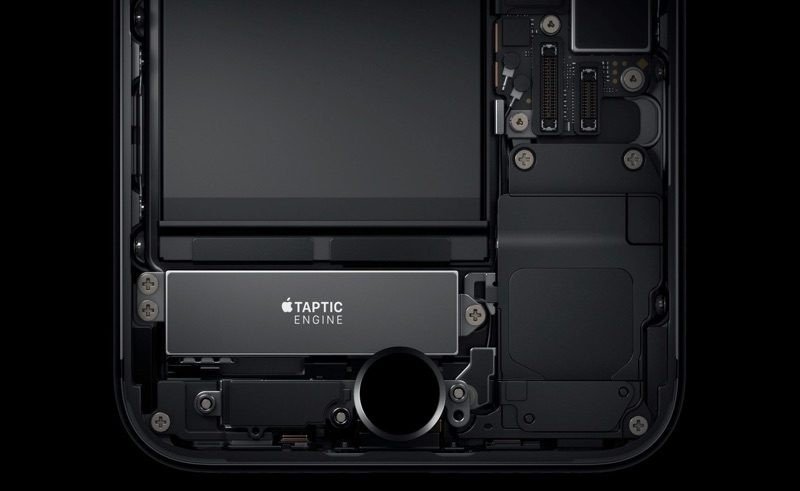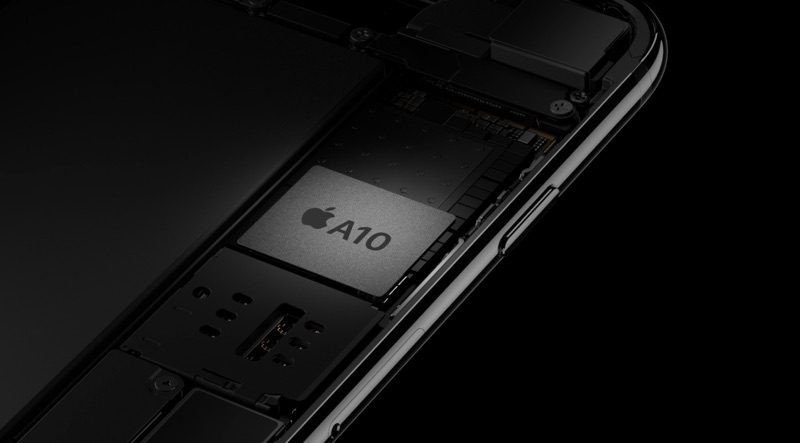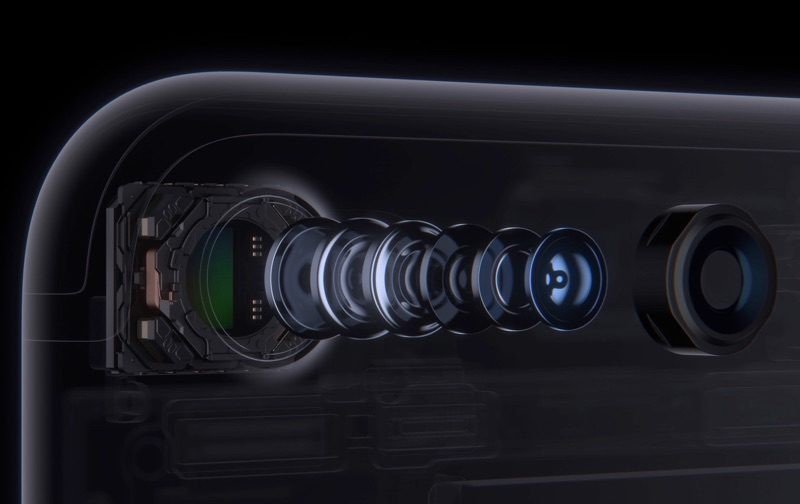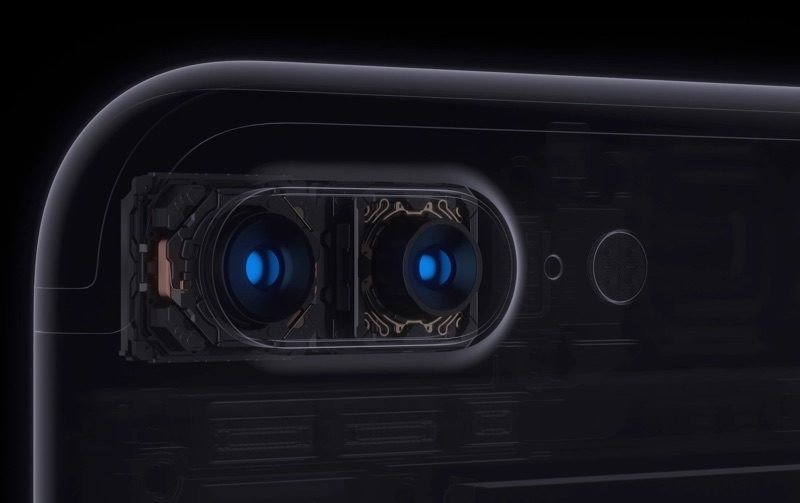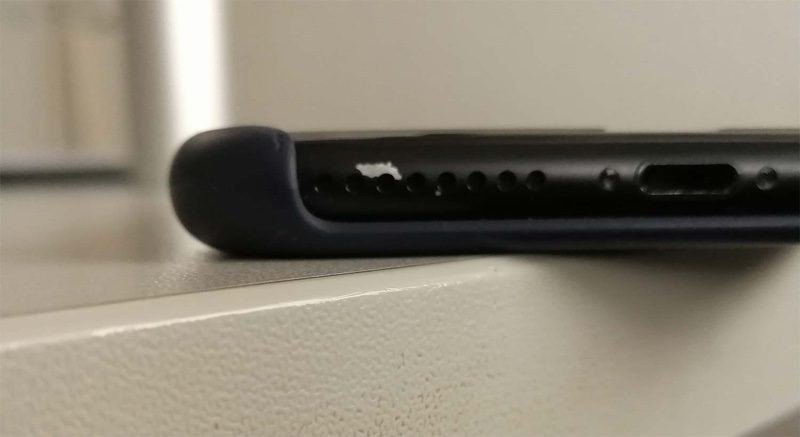iPhone 7
The iPhone 7 and iPhone 7 Plus are equipped with an A10 Fusion processor, which is 40 percent faster than the processor in the iPhone 6s
Author:Daniel BarrettAug 19, 202239203 Shares2177946 Views
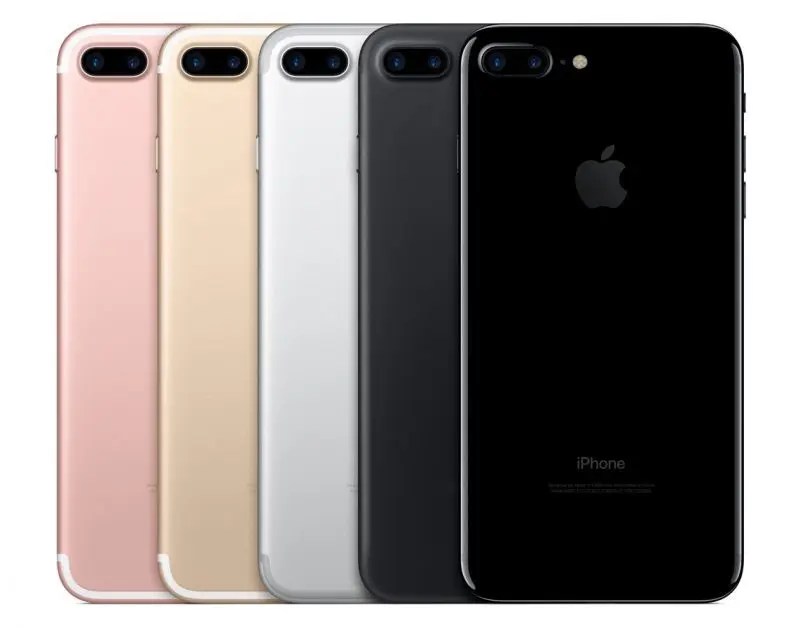
iPhone 7 and iPhone 7 Plus Specs and Features
The iPhone 7and iPhone7 Plus, first released in 2016, are no longer flagship Apple devices, having been replaced by the iPhone 8, iPhone XS, XS Max, XR, iPhone 11, iPhone 11 Pro, and iPhone 11 Pro Max.
Priced starting at $449 for a 64GB iPhone 7 or $569 for an iPhone 7 Plus, the two older iPhones are more affordable than the $599 iPhone 8, the $699 iPhone 8 Plus, $749 iPhone XR, the $999 iPhone XS, and the $1099 iPhone XS Max.
The iPhone 7 and the iPhone 7 Plus devices don’t look very different from the previous-generation iPhone 6s and iPhone 6s Plus, featuring the same 4.7 and 5.5-inch screen sizes and the same dimensions, but there are a few visual differences and the internals are more powerfull.
Most notably when it comes to design, the body of the iPhone 7 has been reengineered to be IP67 dust and water resistant, so it can hold up to splashes, rain, and brief submersion in water.
The main issue everyone’s been talking about is the loss of the headphone socket. Apple may have planned to leak that change a long way in advance; it may have made a good case for the change; and it may have done its best to make the transition as painless as possible by tackling both the pairing and battery-life barriers to wireless headphones through the new W1 chip in AirPods and Beats headphones – but it does remain a downside of the new phones, and one which reviewers discuss.
iPhone 7 review
ArsTechnica was disappointed with the design but has a long list of positives and only a few negatives. However, it does see the loss of the headphone socket as a ‘major catch.’
iPhone 7 review
Business Insider thinks the loss of the headphone socket is ‘a minor nuisance’ and the design is a disappointment. While it describes the iPhone 7 is the best phone on the market, it says there’s not enough reason to upgrade from the 6s.
iPhone 7 review
Engadget sees Apple as playing it safe with this update, but the result still makes the iPhone 7 a ‘serious contender’ for the title of best smartphone.
There is no physical Home button on the iPhone 7, as it has been replaced by a “solid-state” pressure sensitive button that’s connected to a redesigned Taptic Engine to deliver haptic feedback mimicking traditional button presses.
Inside, the iPhone 7 and iPhone 7 Plus are equipped with an A10 Fusion processor, which is 40 percent faster than the processor in the iPhone 6s. It features two high-performance cores for system intensive tasks and two high-efficiency cores that save battery life for smaller tasks.
Stereo speakers, located at the top and bottom of the iPhone, are a new addition, and the biggest feature improvement comes in the form of an overhauled camera system. The iPhone 7 features a 28mm 12-megapixel camera with optical image stabilization, a wider f/1.8 aperture 6-element lens, wide color capture, and a revamped Apple image signal processor, all of which result in brighter, sharper, more detailed photos, even in low-light conditions.
iPhone 7 Plus Rose Gold
The iPhone 7 Plus features all of the camera improvements in the iPhone 7, but in addition to a 28mm wide-angle lens, it has a second 56mm telephoto lens for dual-camera functionality that enables better optical zoom. It also includes a new shallow-depth-of-field portrait mode that uses the two lenses to draw out the portrait subject while blurring the background.
Both iPhones have a four-LED flash that’s 50% brighter and stronger, plus an upgraded 7-megapixel FaceTime HD camera with improved sensor technology and auto image stabilization for better selfies and clearer FaceTime calls.
Water Resistance
Tests have proven that the iPhone 7 can survive immersion in a variety of liquids, from coke and hot coffee to sea water. There’s even been a test to see how well it does in deep water.
Display
Apple is using a display in the iPhone 7 that’s 25 percent brighter than the display in the iPhone 6s, so it’s going to look brighter and clearer outdoors, especially in full sunlight. The display is also using a cinema-standard wide color gamut and end-to-end color management, for more vivid, saturated colors.
The resolution of the display is the same, at 1134 x 750 (326 ppi) for the iPhone 7 and 1920 x 1080 (401 ppi) for the iPhone 7 Plus, and the screen sizes continue to measure in at 4.7 inches for the iPhone 7 and 5.5 inches for the iPhone 7 Plus.
3D Touch
Apple’s 3D Touch technology continues to be an integral part of the display, built into one of the display layers. It is an expanded multi-touch feature that allows the iPhone to measure different levels of pressure in addition to taps, swipes, and pinches.
3D Touch is used across iOS 9 and iOS 10to enable shortcut gestures called a “Peek” and a “Pop” both at the home screen and in iOS apps. A light press enables a Peek, while a deeper press enables a Pop, and there are unique swipe gestures to open up menus and take actions when using Peeks.
Redesigned Home Button
The Home button on the iPhone 7 looks like the iPhone 6s Home button, but it’s no longer a physical button. Apple calls it a “solid state” button, and when you press on it, you get haptic feedback from the Taptic Engine to mimic a button press, similar to the trackpad on the latest MacBooks.
Instead of feeling the sensation of pressing down on an actual button, when you use the Home button on the iPhone 7, you’ll feel haptic vibrations in response to let you know that actions like unlocking the iPhone’s screen or making a payment with Apple Pay have been successful.
When setting up the iPhone 7, you can choose the level of haptic feedback you want, ranging from light to powerful, with a setting in the middle available. It’s worth noting that the iPhone 7 Home button is capacitive, requiring skin contact or the right kind of capacitive gloves to press. It otherwise won’t register touch, unlike the physical home buttons of earlier devices.
Taptic Engine
iPhone 7 Home button is powered by a redesigned and updated Taptic Engine, a piece of hardwarethat was first introduced in the iPhone 6s. According to Apple, the Taptic Engine is more responsive and works with a wider range of frequencies.
Touch ID
The Touch ID fingerprint sensor that replaces passwords and offers additional security for Apple Pay payments is still located on the Home button, despite the Home button’s redesign.
Second-generation Touch ID technology is built into the iPhone 7 and the Touch ID fingerprint sensor is as quick as the one in the iPhone 6s.
A10 Fusion Processor
Apple improves the processor in each iteration of the iPhone, and in the iPhone 7. Some impressive features have been included for the best chip performance in an iOS device yet. The A10 Fusion has a four-core CPU that combines power and efficiency in a unique way.
There are two high-performance cores, which are 40 percent faster than the A9 chip in the iPhone 6s and twice as fast as the A8 chip in the iPhone 6.
There are also two high-efficiency cores that run at 1/5th of the speed of the high-performance cores to preserve battery when doing tasks that aren’t system intensive.
The iPhone 7 is faster than Samsung devices, even recent ones, and it can even outperform most MacBook Air models.
Along with the four-core CPU, the iPhone 7 features a six-core graphics chip that’s 60 percent faster than the A9 and three times faster than the A8. At the same time, it draws one-third less power than the A9 and half as much power as the A8.
There is an embedded M10 motion coprocessor in the A10 Fusion chip that captures motion-based data from the compass, accelerometer, and gyroscope to power Apple’s healthand fitness capabilities without significant power drain.
RAM
Due to the increased demands of a dual-camera system and the software necessary to process images, Apple has equipped the iPhone 7 Plus with 3GB RAM.
The iPhone 7, which uses only a single lens camera, continues to have 2GB RAM like the iPhone 6s.
No Headphone Jack
There is no headphone jack in the iPhone 7, so headphones need to connect wirelessly or through the Lightning port. The removal of the headphone jack was done to save space and to make room for new technologies, plus Apple is using its elimination to drive the development of wireless headphone technology.
To ease the transition away from the 3.5mm headphone jack, Apple is including Lightning EarPods and a Lightning to 3.5mm adapter in each iPhone box. Apple has also developed new wireless headphones called AirPods and introduced new wireless Beats models.
Battery Life
According to Apple, processor improvements and bigger physical batteries have resulted in the longest battery life ever in an iPhone. Those upgrading from an iPhone 6s to an iPhone 7 will see two hours of additional battery life on average. iPhone 7 Plus users upgrading from an iPhone 6s Plus will see at least an hour more battery life. In most cases, users will see much greater increases in battery.
Camera
The iPhone 7 and the iPhone 7 Plus feature a huge jump forward in camera technology, for photographs that are clearer, brighter, and crisper, even in low-light conditions.
Optical image stabilization, once a feature limited to the 5.5-inch iPhone, is built into the iPhone 7, compensating for small movements and hand shakiness when snapping a photo to allow for longer exposure times (3x longer than iPhone 6s). There’s a new 6-element f/1.8 aperture lens that lets 50 percent more light into the sensor while keeping photos sharp at the edges.
The 12-megapixel high-speed sensor is 60 percent faster and 30 percent more efficient, and there’s a new image signal processor with twice the throughput for faster camera performance across the board.
The image signal processor, custom designed by Apple, sets exposure, focus, white balance, and uses wide color capture for more true-to-life images. It features fourth-generation tone mapping and noise reduction, performing 100 billion operations in just 25 milliseconds every single time a photo is taken with the iPhone.
Wide color gamut support results in richer colors, especially for greens and some shades of red. Low-light photo capture is improved, and Live Photos feature stabilization, can be edited, and are accessible to third-party developers via new Capture and Edit APIs. In addition to facial recognition, the iPhone 7 also features full body recognition.
The rear camera is protected by a sapphire lens cover to keep it safe from scratches.
Video
Video taking capabilities haven’t been improved in the iPhone 7. It still includes 4K video recording at 30fps and 1080p video recording at 30 or 60fps. 1080p Slo-mo video support is available at 120fps and 240fps at 720p.
iPhone 7 Plus – Dual Cameras
All of the features built into the iPhone 7 are included in the iPhone 7 Plus, but it has one other unique feature — a second lens. The first lens in the iPhone 7 Plus is the same wide-angle 28mm lens included in the iPhone 7, but it is installed alongside a second 12-megapixel 56mm telephoto lens with an f/2.8 aperture.
The two lenses create a new zoom feature that allows iPhone 7 Plus users to switch seamlessly between standard 1x zoom and an optical 2x zoom, right within the camera app. Optical zoom is superior to digital zoom because there’s no loss of detail, but the 2x optical zoom function also enables better digital zoom for clearer photos up to 10x closer.
Apple says that because you’re starting with a 2x lens when you zoom in with the iPhone 7 Plus, the quality is up to four times better than digital zoom in the iPhone 6s.
Other Features
Speakers
There are two speakers in the iPhone 7, introducing surround sound for the first time. One speaker is at the bottom of the phone and one is at the top, for stereo sound in both portrait and landscape orientations. The two speakers put out twice the volume of the single speaker in the iPhone 6s and have a better overall sound thanks to increased dynamic range.
Bluetooth and NFC
The iPhone 7 features Bluetooth 4.2 for connecting to Bluetooth devices like the AirPods, and it has an NFC chip for use with Apple Pay.
LTE
The iPhone 7 features LTE Advanced for data transfer speeds up to 450Mb/s and support on more LTE bands around the world.
Unlike the iPhone 6s and 6s Plus, which worked on any network, GSM iPhone 7 and 7 Plus models designed for the AT&T and T-Mobile networks are not compatible with the CDMA networks of Verizon and Sprint. This is because Apple has used LTE chips from both Qualcomm and Intel in its devices. GSM devices with Intel chips are not equipped with CDMA functionality, whereas Qualcomm chips work on both GSM and CDMA networks.
Wi-Fi
The iPhone 7 and 7 Plus support 802.11a/b/g/n/ac Wi-Fi with MIMO. The technology is the same as the Wi-Fi technology in the iPhone 6s and 6s Plus, with connection speeds that can reach up to a theoretical maximum of 866Mb/s.
Not Featuring a headphone jack is not the only complaint reviewers have about the iPhone 7, with two other issues raised by many.
First, the vulnerability of that new Jet Black finish to scratches. Everyone who mentioned it said that, after even a few days of careful use, there are multiple scratches – or what Apple calls ‘micro abrasions.’ Everyone also loves the look of the finish, so it’s really going to come down to how much you want it and how able you are to live with the fact that it’s going to get scratched. And if you want to see how bad it can be, check out the photo at the bottom.
Second, the performance of the haptic feedback on the new touch-sensitive Home button. We heard many reports from the hands-on area at the event that – unlike Force Touch on the MacBooks and Magic Trackpad – it simply doesn’t realistically simulate a click. Almost everyone reports that the entire bottom of the phone vibrates.
As of September 2017, the iPhone 7 and iPhone 7 Plus have been replaced by the iPhone 8, iPhone 8 Plus, iPhone X, iPhone XS, and iPhone XR. Apple is still selling the iPhone 7 and iPhone 7 Plus as lower-cost devices starting at $449, but the two iPhones are no longer the company’s flagship smartphones.

Daniel Barrett
Author
Latest Articles
Popular Articles
